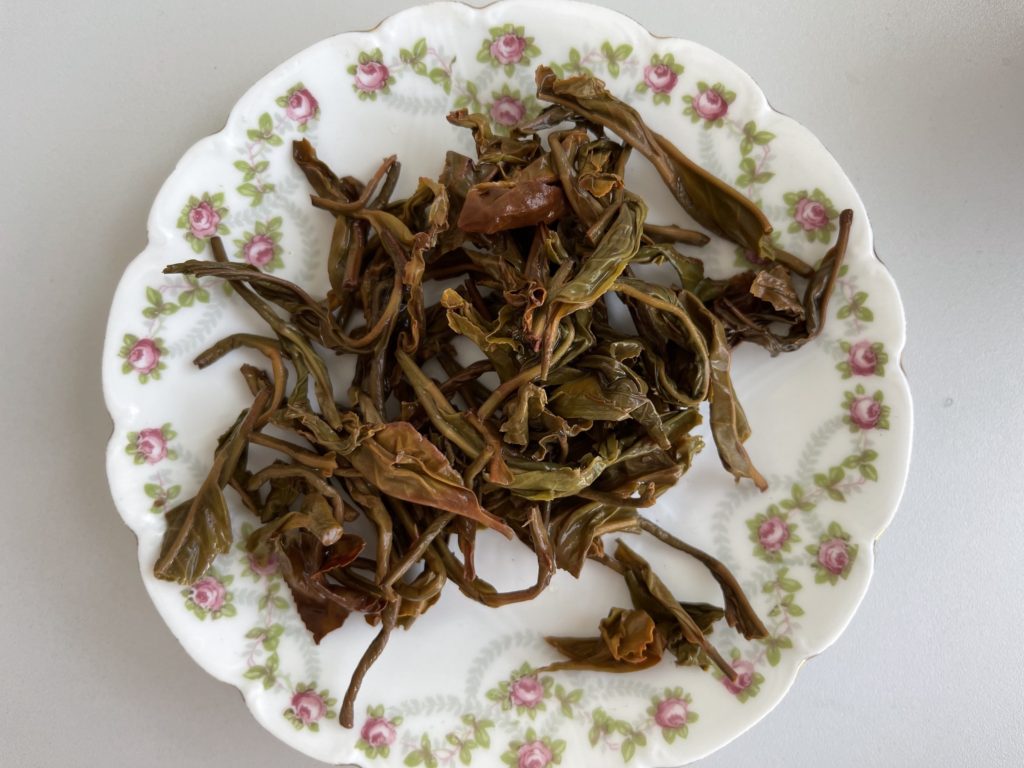Hello tea friends!

This is possibly my most anticipated tea purchase of the year, because I pre-ordered this tea all the way in May but only received it in September. What kind of tea is this? It’s a black tea from Satemwa Tea Farm. As part of the letter that came with the tea says:
“This is the exclusive, ground breaking, first harvest of a special Malawian cultivar developed by the Tea Research Foundation in Mujanje and grown and crafted on Satemwa in The Shire Highlands. […] They have created an elegant black tea rich in unique flavours. The leaves have been rolled by hand to bring out their most complex flavours. A fragrant beginning leads to succulent middle with notes of honey and dried mango and ends on citrusy lemon note.”
These are honestly high words and if I’m being totally honest, a bit intimidating because 1) what if my expectations have been set too high, or worse 2) what if I am unable to pick up specific notes in this tea?
This is probably why I tasted the tea three times before publishing this review.
First Impressions

The leaves are generally dark but with greenish-gold patches. They smell rich and woody and look absolutely inviting.
Tasting Notes
Since I’ve tried this three times at various temperatures, I’m going to change things up a bit in this review and tell you what I got from the tea at different temperatures.

With freshly boiled water, there are basically two ways the tea turned out. The first is that if I use freshly boiled water for the first steep, what I get is a light brown tea liquor that’s rich and sweet with a floral-vegetal note. The tea is light and easy to drink, and I love how it lingers in the mouth.
So freshly boiled water for the first steep is great. But I have noticed that if I use freshly boiled water for subsequent steeps, the tea develops smoky and bitter notes. I’m actually not a fan of this version of the tea liquor, so I’ll probably avoid using very hot water until the tea leaves are on its last legs and need all the coaxing it can get.
If the second/third/fourth steeps use water about 80 degrees or so, the tea maintains its beautiful sweet and floral-vegetal notes. In fact, I found that the floral-vegetal note clarified itself into a floral note – I think it was on a second steep with this temperature that I realised that this tea reminded me of the benifuuki cultivar and its floral notes.

Looking at the spent leaves, the tea seems to be rather lightly oxidised. But it still packs a punch – I brewed this tea gongfu-style and managed to get seven steeps out of it. However, the sixth and seven steeps were really light, so I think you can stop after the fifth steep without feeling like you need to keep going with the tea.
Overall, I really enjoyed this! I wish I knew what cultivar this is, but I’m very happy to be able to try this tea from Satemwa Tea Farm and I look forward to the tea innovations that I’m sure they’ll have in the future.

Very thorough review…as usual. You really like your tea! The plates are cool, too! Limoges?
Thank you!! And wow, I’m surprised you can recognise the plates from Limoges! I got them from the antique market here(:
It’s so interesting how the temperature has such a large impact on the taste!
Right? It’s a very fun tea to brew!
Ciao! Interesting, since I’m still struggling with this tea… Can you please tell me the water to leaves ratio and how long did you infuse the gongfu sessions? I’m mostly extracting herbaceous notes…not so pleasant. Thanks. Pier
Hi! I don’t weigh my leaves so I can’t give the exact ratio, but I cover the bottom of my gaiwan with the dry leaves (and the leaves expand to fill 1/2 the gaiwan by the end of the session). For timing, I started with 30s and increased by about 15s/steep from there.
I’ve not gotten any herbaceous notes from this, so I’m surprised to hear that’s what you got!
Could it be the type of water as well? I feel like the water in France is harder, even with a filter, so that may affect things for me.
Thank you Eustacia! Today I followed your suggestions. It improved (I use bottled water with low level of mineral content, used by Italian tea masters as well) but the vegetal notes (quite less herbaceous) are not my preferred taste. Who knows…not necessarily we have to appreciate a type of tea. For sure I’m more on the “dark side” rather than green. The greener tea I drink are gaoshans…
Anyway you directions were very helpful. Thanks a lot!!! Ciao. Pier
I definitely agree that this tea was very green (especially considering it is a black tea)!